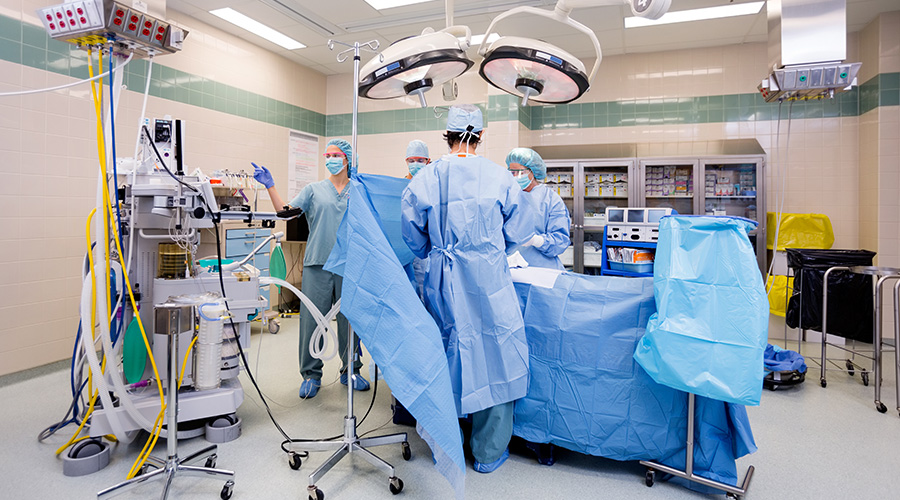Energy efficient technologies are a hot topic in many industries, including healthcare. Rising energy costs and a push for green technology are fueling this growing conversation. There are many different types of energy efficient technology, so approaching the topic can seem daunting at first. However, it is not as alien a concept as it really is.
In fact, most energy efficient technologies have been around for quite some time. It is just that they are now entering mainstream consciousness. Some are even simple changes like swapping out older forms of lighting for LED instead. On the other hand, some changes can get larger and more complex, such as replacing traditionally powered HVAC systems for heat pump systems.
This should not be a complete deterrent, though, as greener technology can still prove to be beneficial despite its complexities.
First off, hospitals operate around the clock and therefore consume a lot of energy. According to ESource’s Friendly Power, “An average U.S. hospital uses 31 kilowatt-hours of electricity and 103,600 British thermal units of natural gas per square foot annually.” This information was released back in 2021, however, it serves as a reference point for how much energy is used. To get a complete perspective, how much would that cost?
According to Electricity Plans, the average monthly electricity bill for hospitals in 2021 was around $72,295. That amounts to $867,540 annually. Not only do hospitals consume a lot of energy on average, but they also spend a good deal of money on it. A potential solution to that is energy efficient technology.
One energy efficient technology is combined heat and power (CHP). According to the U.S. Environmental Protection Agency (EPA), “CHP is the concurrent generation of electricity and thermal energy (i.e., heating, cooling, hot water, and steam for sterilization).” The EPA also says that CHP has “several advantages” over traditional energy services:
- Resilience. CHP can operate independently of the electric grid, providing electricity to hospitals during grid outages.
- Superior efficiency. CHP can provide the same energy services using approximately one-third less fuel than what would be required by a conventional energy system.
- Cost savings. Superior efficiency means lower energy costs. CHP is especially cost-effective for hospitals because they operate continuously, have high energy costs, and use both electricity and thermal energy.
- Lower emissions. By burning less fuel than used by conventional energy services, CHP systems produce fewer greenhouse gas emissions like carbon dioxide (CO2), and fewer nitrogen oxides (NOx) and sulfur dioxide (SO2) emissions
Another technology that can aid in increasing energy efficiency is building automation systems (BAS). BAS essentially controls and monitors a hospital’s systems and the devices connected to it. This is possible due to the Internet of Things (IoT), which is when a group of devices are all connected via the Internet and exchange data with each other.
According to Buildings IoT, the benefits stem from “unifying building systems, integrating IoT devices, and adding an analytics layer, data from all connected systems can be continuously monitored and evaluated to provide deep, real-time insight into how the building functions. A platform with machine learning capabilities can then provide recommendations for human users or even make changes automatically using pre-programmed parameters to optimize performance.”
From that, hospitals can gain insights into how the building itself is running. This allows for the facility staff to adjust and adapt certain functions of the hospital to run more efficiently.
While seemingly complex, these technologies are mostly user-friendly and aim to streamline processes, not complicate them. In addition, adoption of this new technology is going to vary depending upon a hospital or healthcare facility’s needs. Where a certain technology makes sense for one hospital’s needs, it can be out of the question for another hospital. However, the inherently dynamic nature of technology will find a way to meet these individual needs in time.
Jeff Wardon, Jr. is the assistant editor for the facilities market.

 Building Hospital Resilience in an Era of Extreme Weather
Building Hospital Resilience in an Era of Extreme Weather Ennoble Care Falls Victim to Data Breach
Ennoble Care Falls Victim to Data Breach USDA Invests $73.8M to Aid in Livingston Hospital Expansion
USDA Invests $73.8M to Aid in Livingston Hospital Expansion Why A Skilled Cleaning Staff Matters in Operating Rooms
Why A Skilled Cleaning Staff Matters in Operating Rooms General Leonard Wood Community Hospital Opening Date Set
General Leonard Wood Community Hospital Opening Date Set